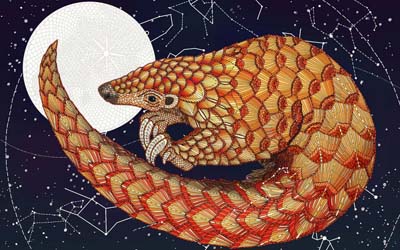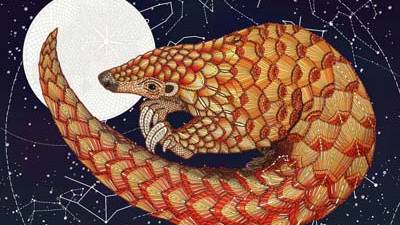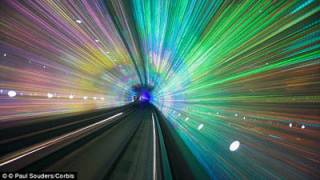Physics’s Pangolin: Stubborn Paradoxes in Theoretical Physics
Source: aeonmagazine.com

Trying to resolve the stubborn paradoxes of their field, physicists craft ever more mind-boggling visions of reality
Theoretical physics is beset by a paradox that remains as mysterious today as it was a century ago: at the subatomic level things are simultaneously particles and waves. Like the duck-rabbit illusion first described in 1899 by the Polish-born American psychologist Joseph Jastrow, subatomic reality appears to us as two different categories of being.
But there is another paradox in play. Physics itself is riven by the competing frameworks of quantum theory and general relativity, whose differing descriptions of our world eerily mirror the wave-particle tension. When it comes to the very big and the extremely small, physical reality appears to be not one thing, but two. Where quantum theory describes the subatomic realm as a domain of individual quanta, all jitterbug and jumps, general relativity depicts happenings on the cosmological scale as a stately waltz of smooth flowing space-time. General relativity is like Strauss — deep, dignified and graceful. Quantum theory, like jazz, is disconnected, syncopated, and dazzlingly modern.
Physicists are deeply aware of the schizophrenic nature of their science and long to find a synthesis, or unification. Such is the goal of a so-called ‘theory of everything’. However, to non-physicists, these competing lines of thought, and the paradoxes they entrain, can seem not just bewildering but absurd. In my experience as a science writer, no other scientific discipline elicits such contradictory responses.
This schism was brought home to me starkly some months ago when, in the course of a fortnight, I happened to participate in two public discussion panels, one with a cosmologist at Caltech, Pasadena, the other with a leading literary studies scholar from the University of Southern Carolina. On the panel with the cosmologist, a researcher whose work I admire, the discussion turned to time, about which he had written a recent, and splendid, book. Like philosophers, physicists have struggled with the concept of time for centuries, but now, he told us, they had locked it down mathematically and were on the verge of a final state of understanding. In my Caltech friend’s view, physics is a progression towards an ever more accurate and encompassing Truth. My literary theory panellist was having none of this. A Lewis Carroll scholar, he had joined me for a discussion about mathematics in relation to literature, art and science. For him, maths was a delightful form of play, a ludic formalism to be admired and enjoyed; but any claims physicists might make about truth in their work were, in his view, ‘nonsense’. This mathematically based science, he said, was just ‘another kind of storytelling’.
On the one hand, then, physics is taken to be a march toward an ultimate understanding of reality; on the other, it is seen as no different in status to the understandings handed down to us by myth, religion and, no less, literary studies. Because I spend my time about equally in the realms of the sciences and arts, I encounter a lot of this dualism. Depending on whom I am with, I find myself engaging in two entirely different kinds of conversation. Can we all be talking about the same subject?
Most physicists are Platonists. They believe that the mathematical relationships they discover in the world about us represent some kind of transcendent truth existing independently from, and perhaps a priori to, the physical world. In this way of seeing, the universe came into being according to a mathematical plan, what the British physicist Paul Davies has called ‘a cosmic blueprint’. Discovering this ‘plan’ is a goal for many theoretical physicists and the schism in the foundation of their framework is thus intensely frustrating. It’s as if the cosmic architect has designed a fiendish puzzle in which two apparently incompatible parts must be fitted together. Both are necessary, for both theories make predictions that have been verified to a dozen or so decimal places, and it is on the basis of these theories that we have built such marvels as microchips, lasers, and GPS satellites.
Quite apart from the physical tensions that exist between them, relativity and quantum theory each pose philosophical problems. Are space and time fundamental qualities of the universe, as general relativity suggests, or are they byproducts of something even more basic, something that might arise from a quantum process? Looking at quantum mechanics, huge debates swirl around the simplest situations. Does the universe split into multiple copies of itself every time an electron changes orbit in an atom, or every time a photon of light passes through a slit? Some say yes, others say absolutely not.
Theoretical physicists can’t even agree on what the celebrated waves of quantum theory mean. What is doing the ‘waving’? Are the waves physically real, or are they just mathematical representations of probability distributions? Are the ‘particles’ guided by the ‘waves’? And, if so, how? The dilemma posed by wave-particle duality is the tip of an epistemological iceberg on which many ships have been broken and wrecked.
Undeterred, some theoretical physicists are resorting to increasingly bold measures in their attempts to resolve these dilemmas. Take the ‘many-worlds’ interpretation of quantum theory, which proposes that every time a subatomic action takes place the universe splits into multiple, slightly different, copies of itself, with each new ‘world’ representing one of the possible outcomes.
When this idea was first proposed in 1957 by the American physicist Hugh Everett, it was considered an almost lunatic-fringe position. Even 20 years later, when I was a physics student, many of my professors thought it was a kind of madness to go down this path. Yet in recent years the many-worlds position has become mainstream. The idea of a quasi-infinite, ever-proliferating array of universes has been given further credence as a result of being taken up by string theorists, who argue that every mathematically possible version of the string theory equations corresponds to an actually existing universe, and estimate that there are 10 to the power of 500 different possibilities. To put this in perspective: physicists believe that in our universe there are approximately 10 to the power of 80 subatomic particles. In string cosmology, the totality of existing universes exceeds the number of particles in our universe by more than 400 orders of magnitude.
Nothing in our experience compares to this unimaginably vast number. Every universe that can be mathematically imagined within the string parameters — including ones in which you exist with a prehensile tail, to use an example given by the American string theorist Brian Greene — is said to be manifest somewhere in a vast supra-spatial array ‘beyond’ the space-time bubble of our own universe.
What is so epistemologically daring here is that the equations are taken to be the fundamental reality. The fact that the mathematics allows for gazillions of variations is seen to be evidence for gazillions of actual worlds.
Perhaps what we are encountering here is not so much the edge of reality, but the limits of the physicists’ category system
This kind of reification of equations is precisely what strikes some humanities scholars as childishly naive. At the very least, it raises serious questions about the relationship between our mathematical models of reality, and reality itself. While it is true that in the history of physics many important discoveries have emerged from revelations within equations — Paul Dirac’s formulation for antimatter being perhaps the most famous example — one does not need to be a cultural relativist to feel sceptical about the idea that the only way forward now is to accept an infinite cosmic ‘landscape’ of universes that embrace every conceivable version of world history, including those in which the Middle Ages never ended or Hitler won.
In the 30 years since I was a student, physicists’ interpretations of their field have increasingly tended toward literalism, while the humanities have tilted towards postmodernism. Thus a kind of stalemate has ensued. Neither side seems inclined to contemplate more nuanced views. It is hard to see ways out of this tunnel, but in the work of the late British anthropologist Mary Douglas I believe we can find a tool for thinking about some of these questions.
On the surface, Douglas’s great book Purity and Danger (1966) would seem to have nothing do with physics; it is an inquiry into the nature of dirt and cleanliness in cultures across the globe. Douglas studied taboo rituals that deal with the unclean, but her book ends with a far-reaching thesis about human language and the limits of all language systems. Given that physics is couched in the language-system of mathematics, her argument is worth considering here.
 In a nutshell, Douglas notes that all languages parse the world into categories; in English, for instance, we call some things ‘mammals’ and other things ‘lizards’ and have no trouble recognising the two separate groups. Yet there are some things that do not fit neatly into either category: the pangolin, or scaly anteater, for example. Though pangolins are warm-blooded like mammals and birth their young, they have armoured bodies like some kind of bizarre lizard. Such definitional monstrosities are not just a feature of English. Douglas notes that all category systems contain liminal confusions, and she proposes that such ambiguity is the essence of what is seen to be impure or unclean.
In a nutshell, Douglas notes that all languages parse the world into categories; in English, for instance, we call some things ‘mammals’ and other things ‘lizards’ and have no trouble recognising the two separate groups. Yet there are some things that do not fit neatly into either category: the pangolin, or scaly anteater, for example. Though pangolins are warm-blooded like mammals and birth their young, they have armoured bodies like some kind of bizarre lizard. Such definitional monstrosities are not just a feature of English. Douglas notes that all category systems contain liminal confusions, and she proposes that such ambiguity is the essence of what is seen to be impure or unclean.
Whatever doesn’t parse neatly in a given linguistic system can become a source of anxiety to the culture that speaks this language, calling forth special ritual acts whose function, Douglas argues, is actually to acknowledge the limits of language itself. In the Lele culture of the Congo, for example, this epistemological confrontation takes place around a special cult of the pangolin, whose initiates ritualistically eat the abominable animal, thereby sacralising it and processing its ‘dirt’ for the entire society.
[...]
Read the full article at: aeonmagazine.com
Top image via Aeon Magazine






















